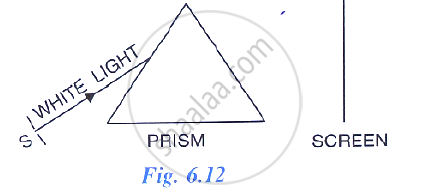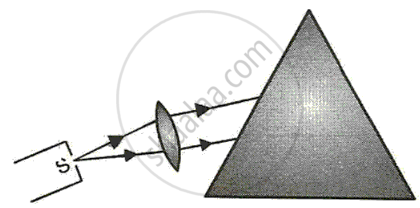Advertisements
Advertisements
प्रश्न
If a monochromatic beam of light undergoes minimum deviation through an equiangular prism, how does the beam pass through the prism, with respect to its base?
उत्तर
If a monochromatic beam of light undergoes minimum deviation through an equi-angular prism,
then the beam passes parallel to the base of prism.
APPEARS IN
संबंधित प्रश्न
Name three factors on which the deviation produced by a prism depends and state how does it depend on the factors stated by you.
How does the deviation produced by a triangular prism depend on the colours (or wavelengths) of light incident on it?
Which colour of white light travels fastest in glass?
In following figure shows a thin beam of white light from a source S striking on one face of a prism.

Complete the diagram to show effect of prism on the beam and to show what is seen on the screen.
In following diagram shows a thin beam of white light from a source S striking on one face of a prism.

A slit is placed in between the prism and the screen to pass only the light of green colour. What will you then observe on the screen?
Fig shows part of the arrangement for obtaining pure spectrum.
(a) Complete thediagram and show how to obtain a pure spectrum.
(b) What are the conditions necessary for obtaining a pure spectrum?

Light of different colours is deviated through different angles, by a prism. Explain the reason.
Give a reason, why the violet colour of white light deviated most and red colour of white light deviated least.
Explain, why quartz prism is required for obtaining the spectrum of ultra-violet light?
A prism causes dispersion of white light while a rectangular glass block does not. Explain.
